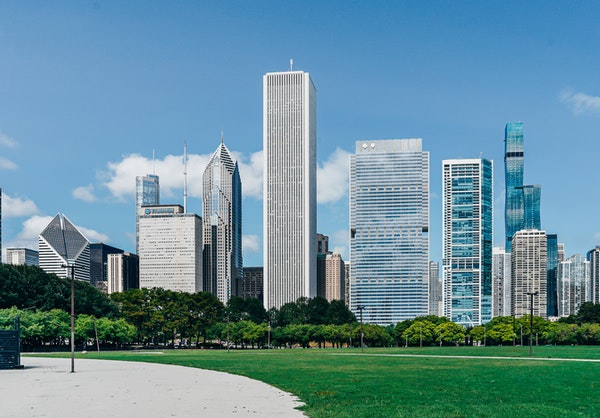The Odd Couple: Health and Design
Your health is impacted by many different things, but urban design is not one that is as frequently talked about as, say, genetics or personal care habits. However, your city’s infrastructure and surrounding environments can have more of an influence on your body than you think.
What are Healthy Cities?
The status of a citizen’s health does not contribute to creating a healthy city. Instead, healthy city status is based on how the city itself maintains a quality standard of living for its citizens. The World Health Organization (Europe) defines a healthy city as “a process, not an outcome.” A processing city is one that “continually creates and improves its physical and social environments, as well as the expansion of the community’s resources− therefore, enabling citizens to mutually support each other in performing all the functions of life, while also developing to their maximum potential.” Essentially, healthy cities ensure that their residents coexist symbiotically while physical structures are expanded, reinforced, beautified, and made more practical.
Making Healthier Cities
You may find that you are not living in a particularly healthy city. While understanding that you cannot make infrastructural, societal, or architectural changes yourself, serving as a health advocate for your city can make a significant difference in helping it be a better place to live.
But what changes should you stand for? Through research, the Institute for Global Health was able to put together a list of 5 Keys to Healthier Cities.
Cleaner air. The air that we breathe every day contains polluted particles, such as dust, dirt, and soot. This air has affected our quality of life since the day we started growing in our mother’s womb. Terrible air pollution can lead to dangerous results, such as lung cancer, stroke, respiratory diseases, etc. Therefore, it is so important to improve the quality of air in highly polluted areas.
Less noise. Air pollution is not the only form of pollution that is detrimental to your health! Noise pollution has been proven to negatively impact well-being. Things like traffic jams, construction sites, community transportation, and even garbage trucks can be harmful to public health by inducing stress, damaging eardrums, and making it difficult to go to sleep and stay asleep. The constant noise is a result of poor urban planning and should be resolved to improve the health of the community.
More green. Natural Spaces, such as public parks, nature trails, and gardens all contribute positively to public health. Numerous studies show that green-filled spaces bring many health advantages to children and adults, such as reduced stress, improved cardiovascular and respiratory health, and lessened symptoms of mental illness. There should be green spaces that link the city together, as opposed to just a few separated parks.
Encouraged movement. It’s obvious that physical activity plays an important role in improving health. Therefore, a community’s design should prioritize integrating environments that support active transportation, such as walking, biking, and taking public transportation in lieu of driving. This may mean creating more bike lanes, sidewalks, and public playgrounds to increase physical activity as a whole amongst the community. Implementing these things will also encourage healthy lifestyles by promoting outdoor physical activities in natural spaces while decreasing amounts of air and noise pollution caused by transportation services.
Temperature control. Urban areas tend to have warmer temperatures compared to surrounding areas. This effect in temperature is called “urban heat island.” Large buildings, lack of green spaces, and heat-absorbent pavement and surfaces all contribute to the rising temperatures within urban areas. These warmer temperatures may result in increased death rates due to cardiovascular and respiratory complications, as well as an increased number of hospital admissions. Future urban designers need to take these heightened temperatures into consideration to safeguard the overall health of their community.
Community health has been severely affected due to poor urban planning. There are many ways to avoid the urban health decrease by prioritizing these changes in order to improve the quality of life within the community.
Agents
We hope that this information on healthy cities is useful to you.
Empower Brokerage is dedicated to helping you make informed decisions about your health and finances. Whether it’s through webinar training, one-on-one calls, seminars, or marketing plans, we want you to be successful!
Give us a call at 888-539-1633 or leave a comment below if you have any questions.
Quick links:
Kayla is a graduate of Texas A&M University and joined the marketing team at Empower Brokerage in early 2021. She creates content for the company websites and assists with various marketing campaigns. LinkedIn Profile




